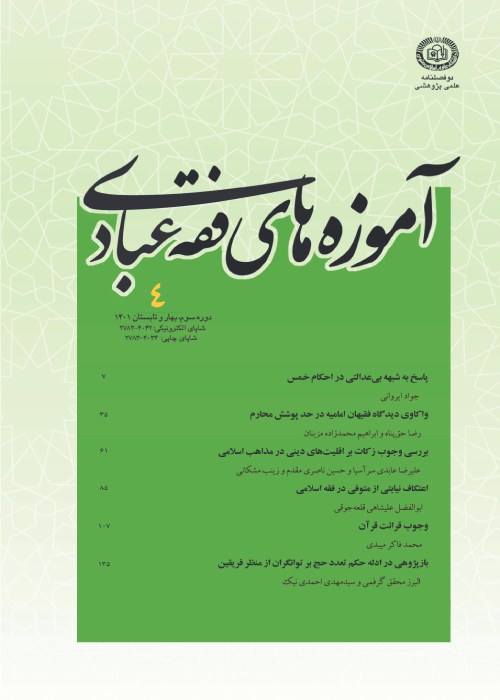Feasibility Study of Acceptance of Women’s Veiling as A Jurisprudential Rule
women’s social relationships and the quality of their presence in society are widely used topics in different times, especially in the present era. The knowledge of jurisprudence is also widely addressed and it is obvious that in the Islamic system, the jurisprudential view of this issue is an inevitable necessity. This issue can be clearly used by reviewing jurisprudential books that the fatwās of many famous Imami jurists observes the maximum abstinence of women from attending to non-maḥrams. This issue by reviewing jurisprudential books can be clearly used that the fatwas of many famous Imami jurists are aimed at the maximum avoidance of women from appearing in front of non-maḥrams (i.e. the opposite sex that one is allowed to marry, Arabic: غیر المحارم). However, in jurisprudential sources, there is no rule in this regard. This article uses descriptive-analytical method to look for answers to two questions: 1- Is it possible to obtain a jurisprudential rule in this field from jurisprudential books, especially the precious book Jawāhir al-kalām (Original title: جواهر الکلام فی شرح شرائع الإسلام, Jawāhir al-kalām fī sharḥ sharāʾiʿ al-ʾislām)? 2- How acceptable is this possible rule? The author concludes that the presence of a woman in front of a non-maḥram is ḥarām (forbidden or unlawful) if it is one of the causes of seduction and sin (one of the most important or [about to happen, imminent] means of seduction), and her veiling is obligatory (wājib); however, if this presence is one of the remote causes of seduction and sin, it is not ḥarām, but it is makrūh (abominated), in a way that does not lead to the possibility of occurrence in ḥarām. Therefore, a rule such as: [The most abstinence of a woman from appearing in front of a non-maḥram is a preponderant and desirable thing in the eyes of the Holy Legislator] can be obtained and defended both from the words of the jurists and from jurisprudential sources. Paying attention to this rule can be effective in inferring jurisprudential rulings in different chapters.
- حق عضویت دریافتی صرف حمایت از نشریات عضو و نگهداری، تکمیل و توسعه مگیران میشود.
- پرداخت حق اشتراک و دانلود مقالات اجازه بازنشر آن در سایر رسانههای چاپی و دیجیتال را به کاربر نمیدهد.


